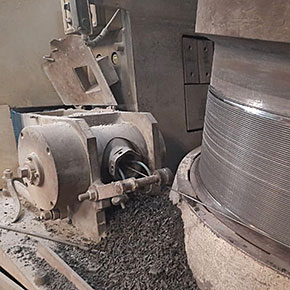Real-time Detection of Lubrication Failure or Abnormalities in Carbide Drawing Dies
This contest is over.
Click here for current contests.
Click here for current contests.
 Deadline: 2020-05-22
Deadline: 2020-05-22Award: 4,00,000 INR
Open to: Everyone*
Steel wires are made by passing wire rods through conically converging dies. As a result of the pulling force on the wire rods through the converging section, the diameter of the wire is reduced. This reduction in diameter of the wires is a gradual process and it takes place by passing the wires through a sequence of dies with gradually decreasing converging sections. The wire diameter and the corresponding size of the die hole vary from 13 mm to 4 mm in sequential decreasing order. These wire drawing dies are made of sintered tungsten carbide (WC). For the purpose of lubrication, dry lubricants are used which forms a thin layer between the wire and die surface to prevent direct contact between them to reduce friction.
At present, there is no direct measurement of friction between die and wire. Lubrication failure may occur whenever there is direct metal to metal contact (die-wire), which increases friction. It can be caused by many factors such as carbide die cracking, insufficient lubricant flow inside die, moisture in lubricants, poor quality of input wire rod used for drawing, poor die cooling etc. Thus, lubrication failure is a random event, which affects the wire quality as it results in the generation of surface defects on wires during drawing, breakage of carbide dies and subsequent loss of productivity.
* Details may apply. See contest website to confirm eligibility.
Notify me of new challenges!
